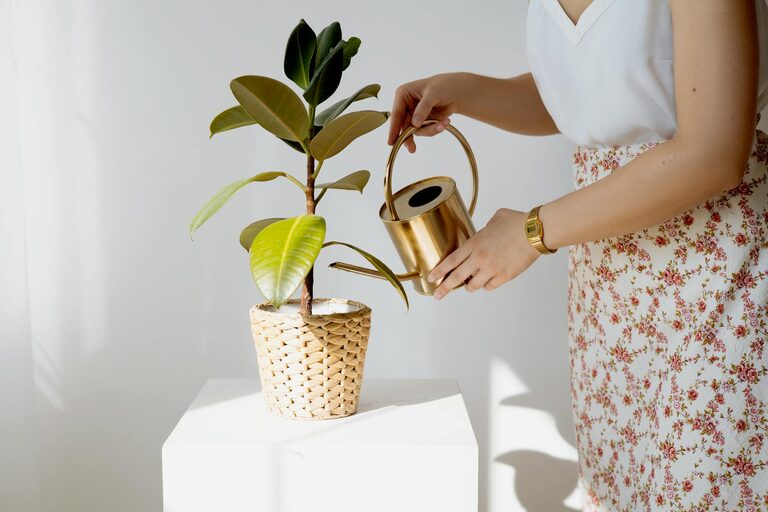Houseplants can brighten up any space, improve air quality, and even boost your mood. However, keeping them healthy requires some basic knowledge and consistent care. Whether you’re a seasoned plant parent or just starting your indoor garden, these tips will help your houseplants thrive all year round.
Understanding Your Plant’s Needs
Every plant species has unique requirements, so understanding what your specific houseplants need is the first step to keeping them healthy.
Light Requirements
Some plants love direct sunlight, while others prefer shade or indirect light. For instance:
– Succulents and cacti typically need bright, direct sunlight.
– Ferns and pothos usually thrive in low to medium indirect light.
Place your plants where they’ll receive the right amount of light. If natural light is limited, consider using grow lights designed for indoor plants.
Watering Basics
Overwatering is one of the most common reasons houseplants suffer. Here’s how to water properly:
– Check soil moisture before watering. Stick your finger about an inch deep—if it feels dry, it’s time to water.
– Use room temperature water to avoid shocking the plant.
– Ensure pots have drainage holes to prevent waterlogging.
Remember, different plants have different watering needs—some like consistently moist soil, others prefer to dry out between waterings.
Temperature and Humidity
Most houseplants prefer daytime temperatures between 65-75°F (18-24°C) and nighttime temperatures slightly cooler. Avoid placing plants near drafts, heaters, or air conditioners, which can cause stress.
Humidity levels affect certain plants more than others, such as tropical varieties like peace lilies or calatheas. If your home is dry, especially in winter, consider using a humidifier or placing plants on a tray with water and pebbles to increase moisture.
Essential Care Tips to Keep Plants Healthy
Regular Feeding
Plant nutrients are essential for growth. Use a balanced, water-soluble fertilizer during the growing season (spring and summer), following the package instructions. Most plants don’t need feeding in dormant seasons like fall and winter.
Pruning and Cleaning
Remove dead or yellowing leaves regularly to encourage new growth and prevent disease. Pruning also helps maintain the plant’s shape and size.
Keep leaves dust-free by gently wiping them with a damp cloth. Clean leaves can better absorb sunlight and look more vibrant.
Repotting When Needed
Plants can outgrow their pots, which can stunt growth and reduce health. Repot your plants every 1-2 years or when you notice roots growing out of drainage holes. Choose a pot slightly larger than the current one and use fresh, high-quality potting mix.
Pest Control
Keep an eye out for common houseplant pests like spider mites, aphids, and mealybugs. If you spot pests:
– Wipe leaves with a damp cloth or mild soapy water.
– Use insecticidal soap or neem oil for more stubborn infestations.
Quarantine new plants before introducing them to your collection to avoid spreading pests.
Creating the Ideal Environment for Your Plants
Grouping Plants Together
Keeping plants close to each other can create a microenvironment with higher humidity, which benefits many houseplants.
Proper Air Circulation
Good air circulation helps prevent fungal diseases. Ensure your plants aren’t cramped and have space for airflow.
Monitoring and Adjusting Conditions
Use a plant care journal or app to track watering schedules, light exposure, and fertilizing dates. Adjust your care routine as seasons change.
Troubleshooting Common Houseplant Problems
Yellow Leaves
Yellowing leaves can indicate overwatering, underwatering, or lack of nutrients. Examine your watering habits first and ensure adequate feeding.
Wilting or Drooping
Wilting often points to underwatering or root issues. Check soil moisture and inspect roots for rot.
Brown Leaf Tips
Brown tips usually mean low humidity, over-fertilization, or inconsistent watering. Increase humidity and avoid excess fertilizer.
No Growth or Slow Growth
If a plant isn’t growing, it might be getting too little light or nutrients. Consider relocating it to a brighter spot or feeding it appropriately.
Final Thoughts: Enjoy Your Green Space
Caring for houseplants is a rewarding hobby that adds life and color to your home. By understanding what your plants need and providing consistent care, you’ll enjoy a thriving indoor garden. Start with these basic tips, and over time, you’ll learn even more about your green companions.
Remember, patience is key—plants grow at their own pace, and a little attention goes a long way in keeping them healthy and happy. Happy planting!


